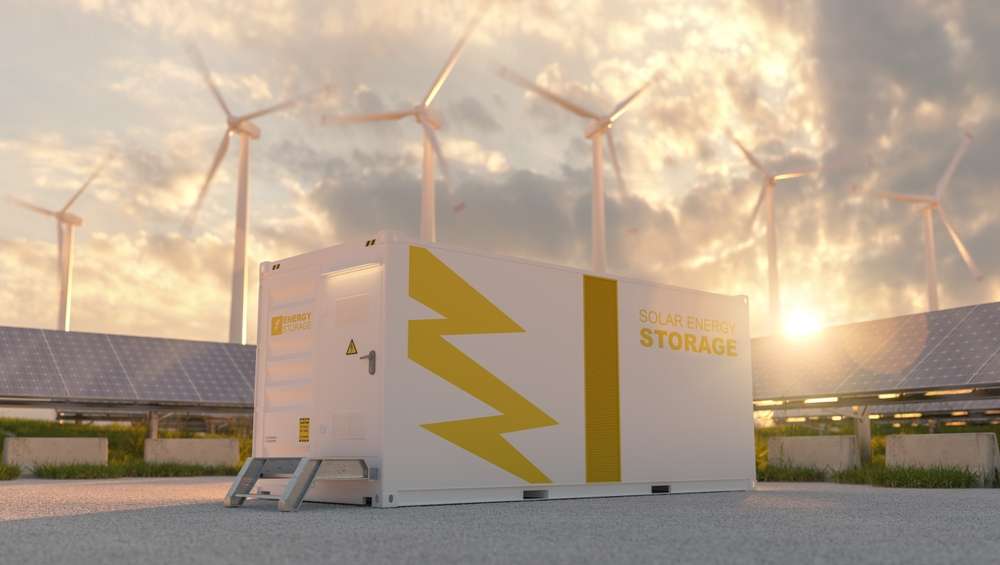Home battery 10 kW: ideal for single-family houses
A 10 kW home battery offers an efficient energy solution for single-family houses, combining reliability, capacity, and long-term savings. Learn how these systems work, what to consider before installing one, and why they’re becoming a key part of modern home energy management.

A 10 kW home battery system provides substantial energy storage capacity for typical single-family houses, offering energy independence and backup power during outages. When paired with solar panels, these systems can significantly reduce reliance on the grid while maximizing the use of self-generated renewable energy. The 10 kW capacity represents the power rating, while the total energy storage is measured in kilowatt-hours (kWh), typically ranging from 10-15 kWh for systems marketed as 10 kW solutions. This capacity is sufficient to power essential home appliances for several hours during outages or to shift energy consumption patterns to reduce utility bills.
What energy storage capacity and efficiency can you expect?
A 10 kW home battery system typically offers between 10-15 kWh of usable energy storage capacity. This means the system can theoretically provide 10 kilowatts of power for about 1-1.5 hours at full discharge, or power lower loads for much longer periods. The distinction between power (kW) and energy (kWh) is crucial - power determines how many appliances can run simultaneously, while energy capacity determines how long they can run.
Modern lithium-ion home batteries achieve efficiency ratings between 85-95%, meaning that for every 10 kWh of electricity stored, approximately 8.5-9.5 kWh can be retrieved for use. This efficiency is affected by factors including ambient temperature, discharge rate, and system components. Most quality systems include sophisticated battery management systems (BMS) that optimize charging cycles, prevent over-discharging, and maintain battery health to preserve this efficiency over the system’s lifespan, which typically ranges from 10-15 years.
How are home batteries installed and maintained?
Installation of a 10 kW home battery system requires professional expertise and typically takes 1-2 days. The process begins with a site assessment to determine optimal placement - usually in a garage, utility room, or weather-protected outdoor area. The installation includes mounting the battery unit, connecting it to the home’s electrical panel, installing a transfer switch for backup power functionality, and integrating monitoring systems. If paired with solar panels, additional integration work ensures seamless operation between the two systems.
Maintenance requirements for modern home batteries are relatively minimal compared to older battery technologies. The lithium-ion batteries commonly used require no water refilling or regular equalization charges. However, homeowners should ensure proper ventilation around the system, keep the area clean and dry, and monitor system performance through the provided app or portal. Most manufacturers recommend annual professional inspections to check electrical connections, verify system operation, and update firmware. With proper installation and maintenance, these systems can maintain over 80% of their original capacity after 10 years of regular use.
What costs and savings can homeowners expect?
The investment for a complete 10 kW home battery system typically ranges from $10,000 to $15,000, including hardware, installation, and basic electrical work. Additional costs may apply for complex installations requiring electrical panel upgrades or extensive rewiring. Many jurisdictions offer incentives that can significantly reduce these costs, including federal tax credits, state rebates, and utility company programs that may cover 20-30% of the total system cost.
The economic return on this investment comes through several mechanisms. For homes with time-of-use electricity rates, batteries can store low-cost off-peak electricity for use during expensive peak hours, potentially saving $500-$1,200 annually depending on rate structures. Homes with solar panels benefit from increased self-consumption of generated electricity rather than selling it back to the grid at lower rates. Some utilities also offer demand response programs where battery owners receive compensation for allowing partial grid control of their storage system during high-demand periods.
| Battery System | Capacity (kWh) | Estimated Cost | Warranty Period |
|---|---|---|---|
| Tesla Powerwall+ | 13.5 kWh | $11,500 installed | 10 years |
| LG RESU 16H Prime | 16 kWh | $13,000 installed | 10 years |
| Enphase IQ Battery 10 | 10.08 kWh | $12,000 installed | 10 years |
| Generac PWRcell | 9-18 kWh | $10,000-18,000 installed | 10 years |
Prices, rates, or cost estimates mentioned in this article are based on the latest available information but may change over time. Independent research is advised before making financial decisions.
How do you choose the right battery for your home?
Selecting the appropriate home battery begins with a thorough assessment of your household’s energy needs. Calculate your average daily electricity consumption (typically 20-30 kWh for a single-family home) and identify critical loads that must remain powered during outages. For most single-family homes, a 10 kW system with 10-15 kWh of storage represents a good balance between capacity and cost.
Beyond capacity, evaluate key technical specifications including depth of discharge (DoD), cycle life, and round-trip efficiency. Higher DoD ratings (80-100%) indicate more usable capacity from the battery. Look for systems with at least 4,000 cycle ratings for daily cycling applications. The warranty terms are equally important - quality systems should guarantee at least 70% capacity retention after 10 years.
Compatibility with existing or planned solar systems is crucial. Some batteries work exclusively with specific inverter brands, while others offer more flexibility. Also consider the monitoring capabilities, as sophisticated energy management systems can maximize financial returns through intelligent charging and discharging algorithms based on your electricity usage patterns and utility rate structures.
What environmental and sustainability benefits do home batteries provide?
Home battery systems contribute significantly to environmental sustainability through several mechanisms. By enabling greater utilization of renewable energy sources like rooftop solar, these systems reduce reliance on fossil fuel-generated electricity. A typical 10 kW battery paired with solar can prevent approximately 4-8 tons of carbon dioxide emissions annually compared to grid-only power, equivalent to taking a car off the road for a year.
Beyond carbon reduction, home batteries help address the intermittency challenge of renewable energy sources. By storing excess solar production during daylight hours for evening use, batteries smooth demand curves and reduce the need for utilities to operate peaking power plants that typically use natural gas or other fossil fuels. This grid stabilization benefit becomes increasingly important as more renewable energy enters the electricity mix.
The manufacturing environmental impact of lithium-ion batteries remains a consideration, with resource extraction and production processes creating an initial carbon footprint. However, lifecycle analyses indicate that this embodied carbon is typically offset within 1-3 years of operation when paired with renewable generation. Additionally, battery recycling programs are becoming more sophisticated, with up to 95% of battery materials potentially recoverable for reuse, further improving the long-term sustainability profile of these systems.




